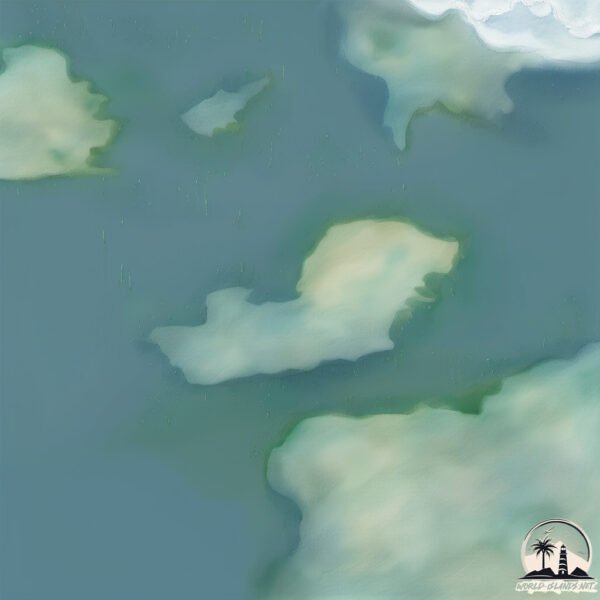Welcome to Leadline , a Polar island in the South Pacific Ocean, part of the majestic Pacific Ocean. This guide offers a comprehensive overview of what makes Leadline unique – from its geography and climate to its population, infrastructure, and beyond. Dive into the details:
Geography and size of Leadline
Size: 1.634 km²Coastline: 13.6 kmOcean: Pacific OceanSea: South Pacific OceanContinent: South America
Leadline is a Small Island spanning 1.6 km² with a coastline of 13.6 km.
Archipel: –
Tectonic Plate: Scotia – Situated in the Southern Ocean, surrounding the Scotia Sea, between South America and Antarctica, known for the Scotia Arc and active seismicity.
The geographic heart of the island is pinpointed at these coordinates:
Climate and weather of Leadline
Climate Zone: PolarClimate Details: TundraTemperature: Cold
Climate Characteristics: The tundra climate features long, extremely cold winters and short, cool summers. Vegetation is limited to mosses, lichens, and small shrubs due to the low temperatures and short growing seasons. Biodiversity is low, but some specialized species thrive.
Topography and nature of Leadline
Timezone: UTC-04:00Timezone places: America/La_PazMax. Elevation: 30 m Mean Elevation: 17 mVegetation: Open WoodlandTree Coverage: 95%
The mean elevation is 17 m. The highest elevation on the island reaches approximately 30 meters above sea level. The island is characterized by Plains: Flat, low-lying lands characterized by a maximum elevation of up to 200 meters. On islands, plains are typically coastal lowlands or central flat areas.
Dominating Vegetation: Open Woodland
Vegetation: 4 vegetation zones – Diverse Island
Infrastructure and Travelling to Leadline
Does the island have a public airport? no .
Does the island have a major port? no .
The mean population of Leadline is 0 per km². Leadline is Uninhabited. The island belongs to Chile .
Continuing your journey, London is the next notable island, situated merely km away.
BEST FISHING KNOT HOW TO TIE FG SMOOTH AND STRONG BRAID TO MONO #fishing #bestfishingknot #tutorial
BEST FISHING KNOT HOW TO TIE FG SMOOTH AND STRONG BRAID TO MONO #fishing #bestfishingknot #tutorial The Secret ...
BEST FISHING KNOT HOW TO TIE FG SMOOTH AND STRONG BRAID TO MONO #fishing #bestfishingknot #tutorial
BEST FISHING KNOT HOW TO TIE FG SMOOTH AND STRONG BRAID TO MONO ...
BEST FISHING KNOT HOW TO TIE FG SMOOTH AND STRONG BRAID TO MONO #fishing #bestfishingknot #tutorial The Secret ...
How to Set Up Your Fly Line, Leader, Tippet, & Flies | Episode 8
Want a FREE Rigs & Knots Pocket Guide? Go Here: ...
Shore Anchoring | Boating Tips
In this episode Captain Keith shows everything you need to know about ...
In this episode Captain Keith shows everything you need to know about anchoring on shore at a beach. This can be a tricky ...
Chile is classified as Emerging region: G20: Group of Twenty – Major economies comprising both developed and emerging countries, representing the world’s largest economies. The level of income is Upper middle income.
News – Latest Updates and Headlines from Leadline
Stay informed with the most recent news and important headlines from Leadline. Here’s a roundup of the latest developments.
Loading...
Please note: The data used here has been primarily extracted from satellite readings. Deviations from exact values may occur, particularly regarding the height of elevations and population density. Land area and coastline measurements refer to average values at mean high tide.

